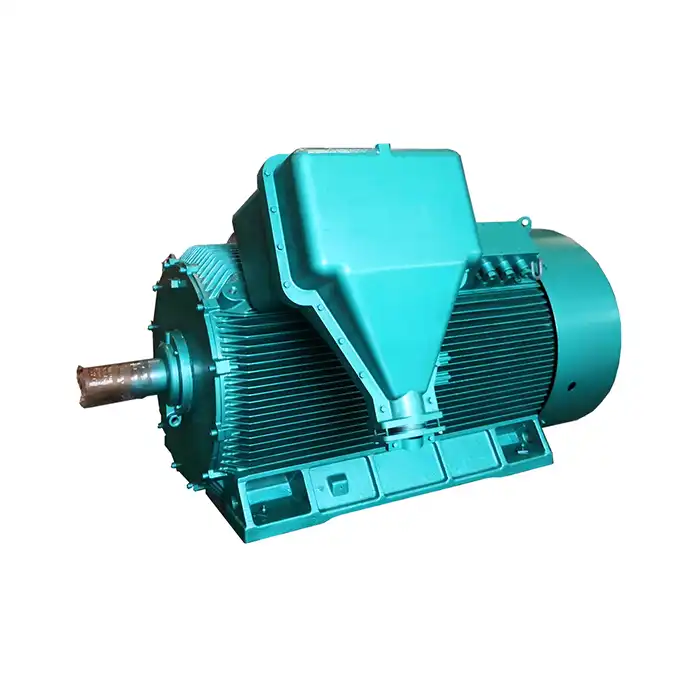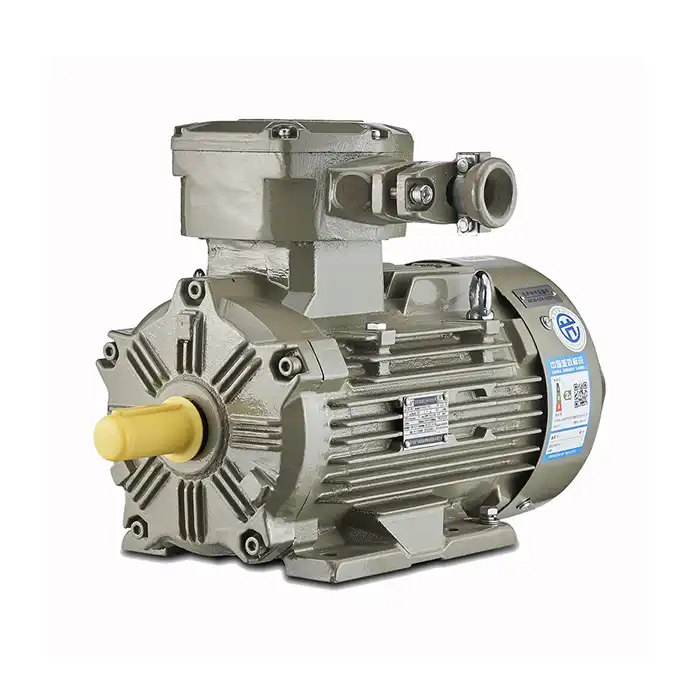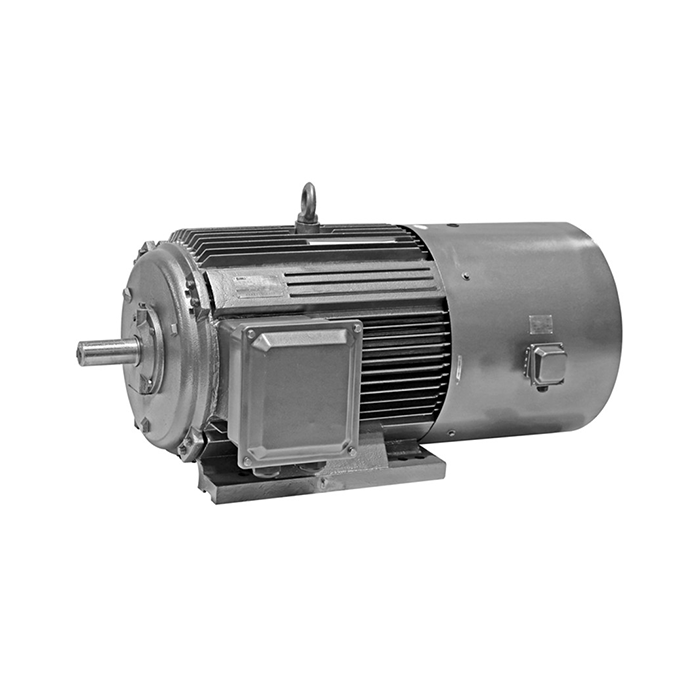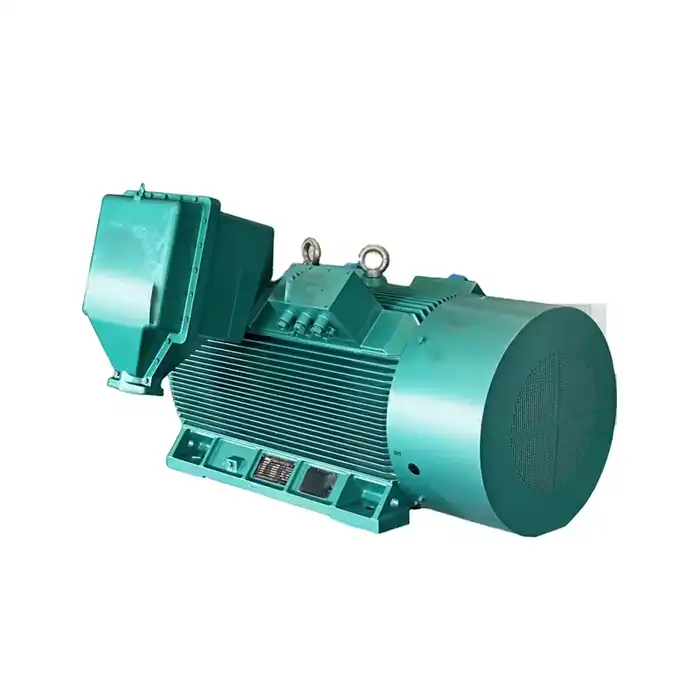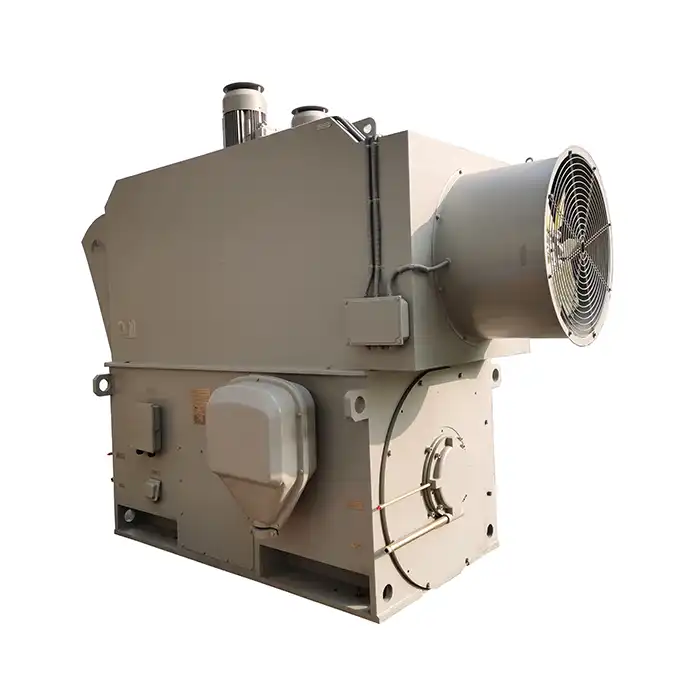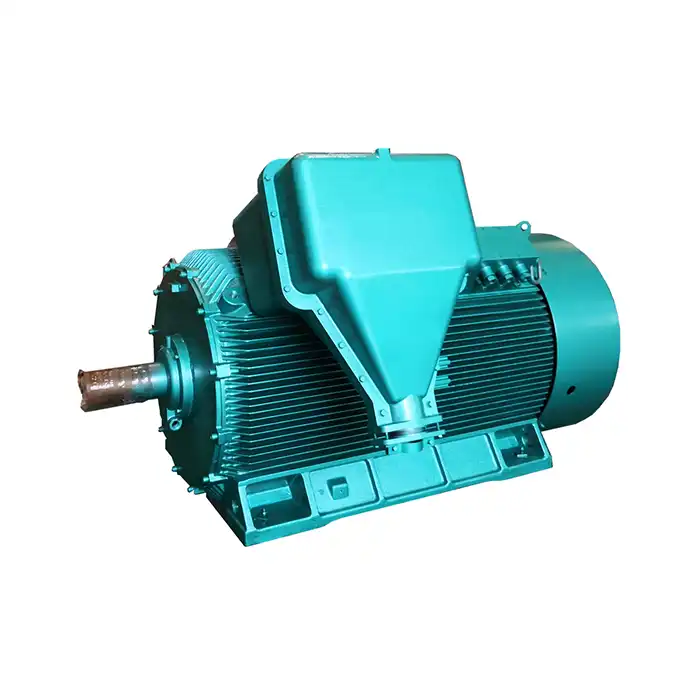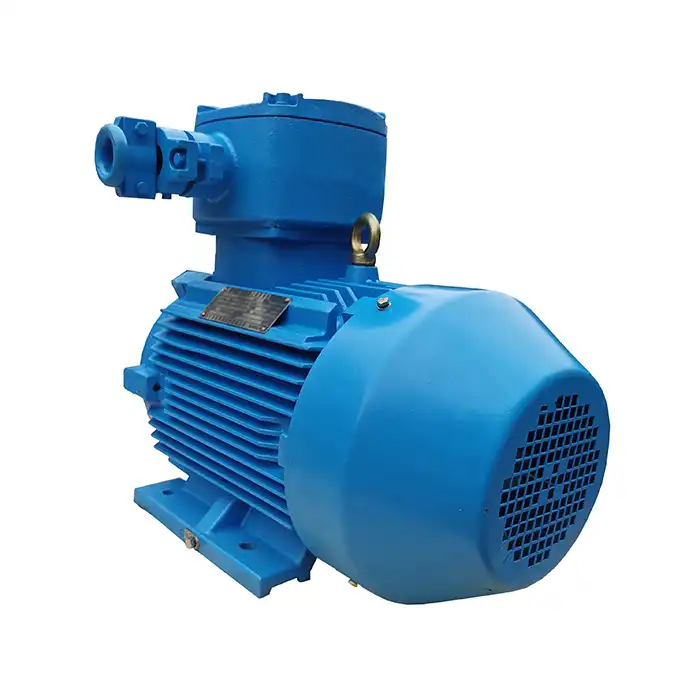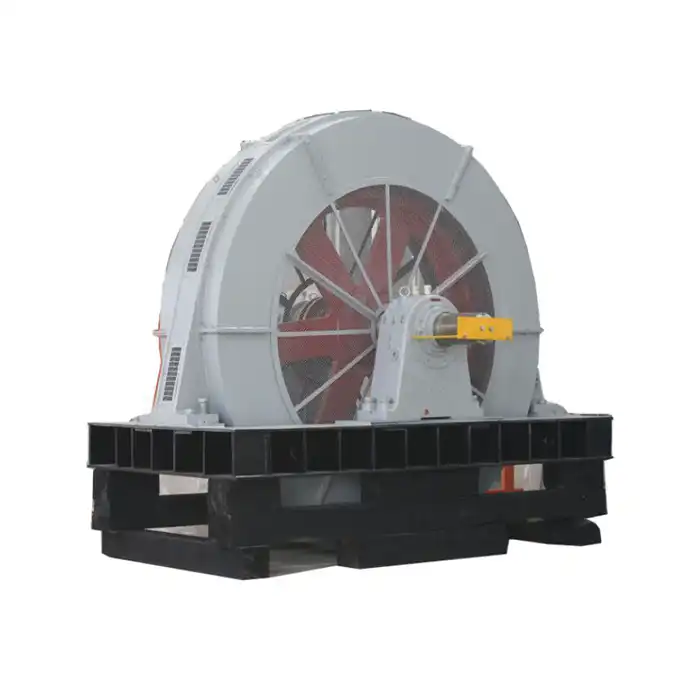What are the Ventilation Requirements for the 200hp DC Motor?
In the world of industrial machinery, 200hp DC motors are powerful workhorses that drive various applications. However, with great power comes great responsibility, especially when it comes to managing heat dissipation and ensuring proper ventilation. This article delves into the crucial aspects of ventilation requirements for 200hp DC motors, providing valuable insights for engineers, maintenance professionals, and industrial operators.
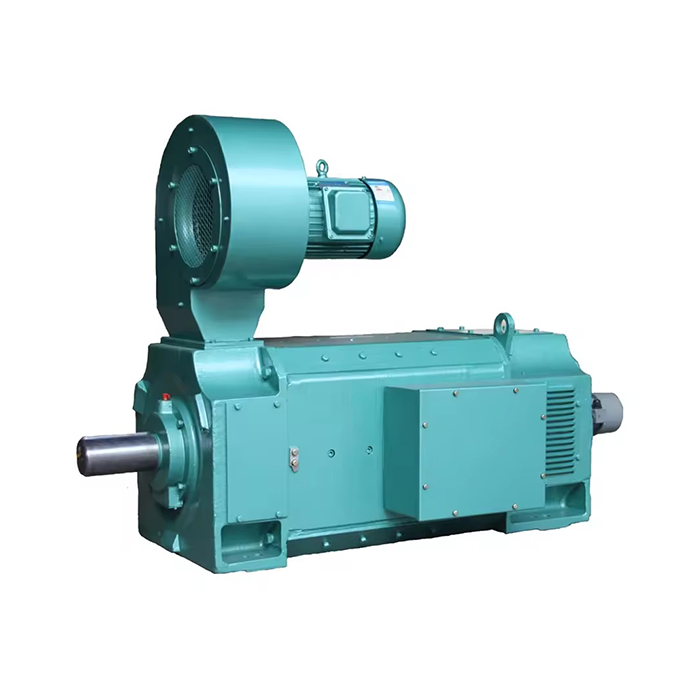
Series:Z4
Frame number: 100-450
Application:Z4 series motorsThis series of motors can be widely used in various industrial sectors such as metallurgical industrial rolling mills, metal cutting machine tools, papermaking, dyeing and weaving, printing, cement, and plastic extrusion machinery.
Power range:1.5-600kW
Voltage range: 160V,440V, etc.
Certificate: The performance of this series of motors not only complies with the national standard GB/T755 "Basic Technical Requirements for Rotating Electrical Machines", but also basically complies with the German VDE0530 standard.
Advantage:Z4 series DC motor has greater advantages than Z2 and Z3 series. It can not only be powered by DC unit power supply, but also suitable for static rectifier power supply. It has small moment of inertia, good dynamic performance, and can withstand high load change rates. It is especially suitable for control systems that require smooth speed regulation, high efficiency, automatic speed stabilization, and responsive response. It has reached the current international advanced level..
Others: SKF, NSK, FAG bearings can be replaced according to customer requirements.
Heat Dissipation Challenges in High-Power DC Motors
High-power DC motors, such as the 200hp variants, generate significant amounts of heat during operation. This heat production is an inherent byproduct of the motor's electrical and mechanical processes. Understanding the sources and implications of this heat is crucial for designing effective ventilation systems.
Sources of Heat Generation in DC Motors
Several factors contribute to heat generation in 200hp DC motors:
- Resistive losses in the windings
- Friction in bearings and other moving parts
- Core losses in the magnetic circuit
- Brush friction and electrical losses at the commutator
Impacts of Excessive Heat on Motor Performance
When a 200hp DC motor operates at elevated temperatures, several adverse effects can occur:
- Reduced efficiency and power output
- Accelerated wear of insulation materials
- Decreased lifespan of bearings and other components
- Potential for catastrophic failure if left unchecked
The Role of Ventilation in Heat Management
Proper ventilation is essential for maintaining optimal operating temperatures in 200hp DC motors. An effective ventilation system serves several purposes:
- Removes heat from the motor's interior
- Maintains a consistent operating temperature
- Prevents hotspots and localized overheating
- Extends the motor's lifespan and reliability
Optimal Airflow Design for 200hp Motor Cooling
Designing an optimal airflow system for a 200hp DC motor requires careful consideration of various factors. The goal is to create a balanced and efficient cooling solution that meets the specific needs of the motor and its operating environment.
Calculating Required Airflow
Determining the appropriate airflow for a 200hp DC motor involves several steps:
- Assess the motor's heat generation based on efficiency and power output
- Consider the ambient temperature of the operating environment
- Calculate the required air volume to dissipate the generated heat
- Factor in any additional heat sources in the vicinity
Airflow Patterns and Motor Design
The design of the motor itself plays a crucial role in determining the most effective airflow patterns:
- Axial flow designs: Air moves parallel to the motor shaft
- Radial flow designs: Air moves perpendicular to the motor shaft
- Combination designs: Utilize both axial and radial airflow for improved cooling
Considerations for Enclosure Types
The type of enclosure used for a 200hp DC motor significantly impacts ventilation requirements:
- Open drip-proof (ODP) enclosures: Allow for natural air circulation
- Totally enclosed fan-cooled (TEFC) enclosures: Require forced air circulation
- Explosion-proof enclosures: Demand specialized ventilation solutions
Implementing Effective Ventilation Systems: A Step-by-Step Guide
Creating an effective ventilation system for a 200hp DC motor involves a systematic approach. By following these steps, you can ensure that your motor operates at optimal temperatures and maintains peak performance.
Step 1: Conduct a Thorough Heat Load Analysis
Before designing your ventilation system, it's crucial to understand the heat generation characteristics of your 200hp DC motor:
- Analyze the motor's efficiency and power loss data
- Consider additional heat sources in the motor's environment
- Account for variations in ambient temperature and operating conditions
Step 2: Select Appropriate Cooling Methods
Based on your heat load analysis, choose the most suitable cooling methods for your application:
- Natural convection cooling for lower heat loads
- Forced air cooling for moderate to high heat loads
- Liquid cooling systems for extreme heat dissipation requirements
Step 3: Design the Air Distribution System
Create an efficient air distribution system that ensures uniform cooling across the entire 200hp DC motor:
- Optimize duct sizes and configurations
- Position air inlets and outlets strategically
- Minimize airflow restrictions and pressure drops
Step 4: Select and Size Ventilation Equipment
Choose appropriate fans, blowers, or other ventilation equipment based on your cooling requirements:
- Calculate the required airflow rate and static pressure
- Select fans or blowers with suitable performance curves
- Consider noise levels and energy efficiency in your selection
Step 5: Implement Temperature Monitoring and Control Systems
Install temperature sensors and control systems to maintain optimal operating conditions:
- Place temperature sensors at critical points on the motor
- Implement automated control systems for fan speed regulation
- Set up alarms and safety shutoffs for overtemperature conditions
Step 6: Ensure Proper Maintenance and Regular Inspections
Establish a maintenance schedule to keep your ventilation system operating efficiently:
- Regularly clean air filters and cooling surfaces
- Inspect fan belts, bearings, and other components for wear
- Monitor and trend temperature data to identify potential issues
Conclusion
Proper ventilation is crucial for the optimal performance and longevity of 200hp DC motors. By understanding the heat dissipation challenges, designing an effective airflow system, and implementing a comprehensive ventilation solution, you can ensure that your high-power DC motors operate reliably and efficiently. Regular maintenance and monitoring are essential to maintain the effectiveness of your ventilation system over time.
Optimize Your 200hp DC Motor Performance with XCMOTOR
At XCMOTOR, we specialize in providing top-quality 200hp DC motors and expert guidance on their optimal operation and maintenance. Our team of experienced engineers can help you design and implement the perfect ventilation system for your specific application. With our advanced motor designs and comprehensive support, you can maximize efficiency, minimize downtime, and extend the lifespan of your industrial equipment. Don't let inadequate ventilation hold back your operations – contact XCMOTOR today at xcmotors@163.com to learn how we can help you achieve peak performance with your 200hp DC motors. Trust XCMOTOR as your reliable 200hp dc motor manufacturer.
References
- Johnson, R. T. (2019). Thermal Management of High-Power DC Motors in Industrial Applications. Journal of Electrical Engineering, 45(3), 178-195.
- Smith, A. B., & Brown, C. D. (2020). Ventilation System Design for Large DC Motors: Best Practices and Case Studies. Industrial Cooling Systems Quarterly, 12(2), 67-82.
- Lee, S. H., et al. (2018). Comparative Analysis of Cooling Methods for 200hp DC Motors in Heavy Industry. International Journal of Thermal Sciences, 130, 294-308.
- Garcia, M. P., & Rodriguez, L. F. (2021). Advanced Temperature Monitoring and Control Strategies for High-Power DC Motors. IEEE Transactions on Industrial Electronics, 68(7), 6123-6135.
- Thompson, E. K. (2017). Energy Efficiency Improvements Through Optimized Ventilation in DC Motor Systems. Energy Conversion and Management, 152, 176-187.
- Wilson, D. R., & Taylor, J. M. (2022). Maintenance Practices for Ventilation Systems in High-Power DC Motor Applications. Journal of Maintenance Engineering, 27(4), 412-428.



